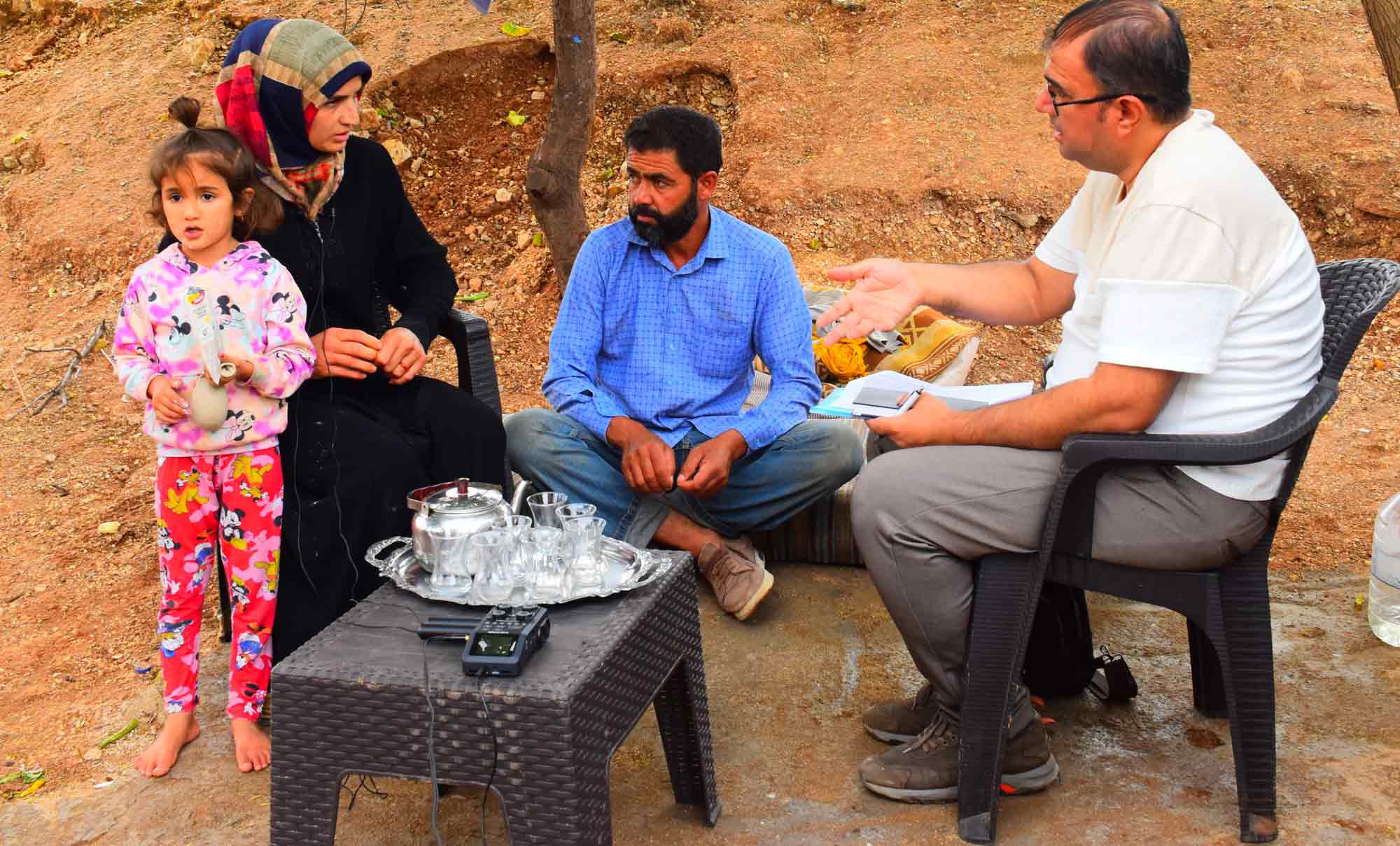By: Hassan Ali
Translation: Yousef Awad
The local cheese, typically prepared in workshops near the Palmyrene desert areas, begins with a large container onto which “rennet grains” are placed. Rennet is a liquid substance extracted from the stomach of young livestock, known scientifically as Renet, and acts like yeast. Locally, it’s called “cheese yeast or cheese cycle.” As soon as the grains are placed on the milk, it curdles, forming cheese. Ms. Lina Khaled, a 34-year-old, Akkawi cheese maker from the Syrian desert, explains, “To prepare a batch of cheese, I need at least 20 to 25 kg of Awassi sheep milk. The preparation method is as follows: We take the milk and strain it through a cheesecloth. If it’s cold, it must be heated to a temperature between 35 and 40 degrees Celsius exclusively. Then we add the cheese cycle to the milk. If the temperature varies, the whey increases and the cheese quantity decreases. We wait for 45 minutes or a little more, then repeat the straining process with the cheesecloth to separate the cheese from the whey, aiming to make the cheese as dry as possible. Then we press the cheese with heavy objects to ensure it’s dry and free of whey. Typically, pressing is done by placing the cheesecloth containing the cheese between two wooden boards, with weights placed on the top board to shape it into a rectangle, allowing us to cut it into cubes approximately the size of a hand. Usually, every 3 or 4 kilos of milk yields one kilo of cheese. The cheese is typically used immediately for consumption. However, if the goal is to store it for other seasons, since cheese spoils quickly, we resort to salting it, which helps preserve the cheese for a full year. The season for making local cheese usually starts in late January and lasts until June each year. The cheese can be either full-fat or low-fat, depending on the milk used in production.”


